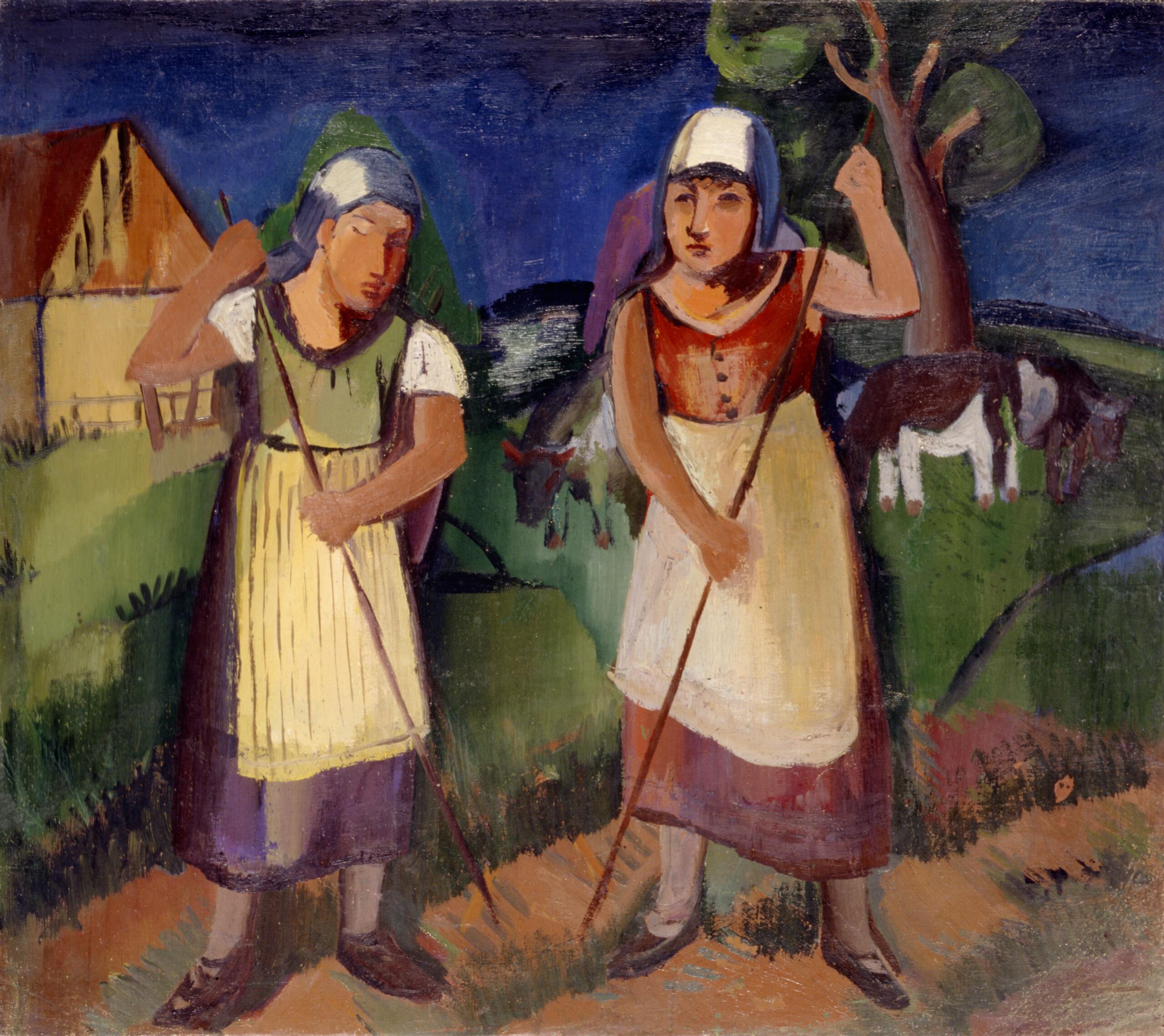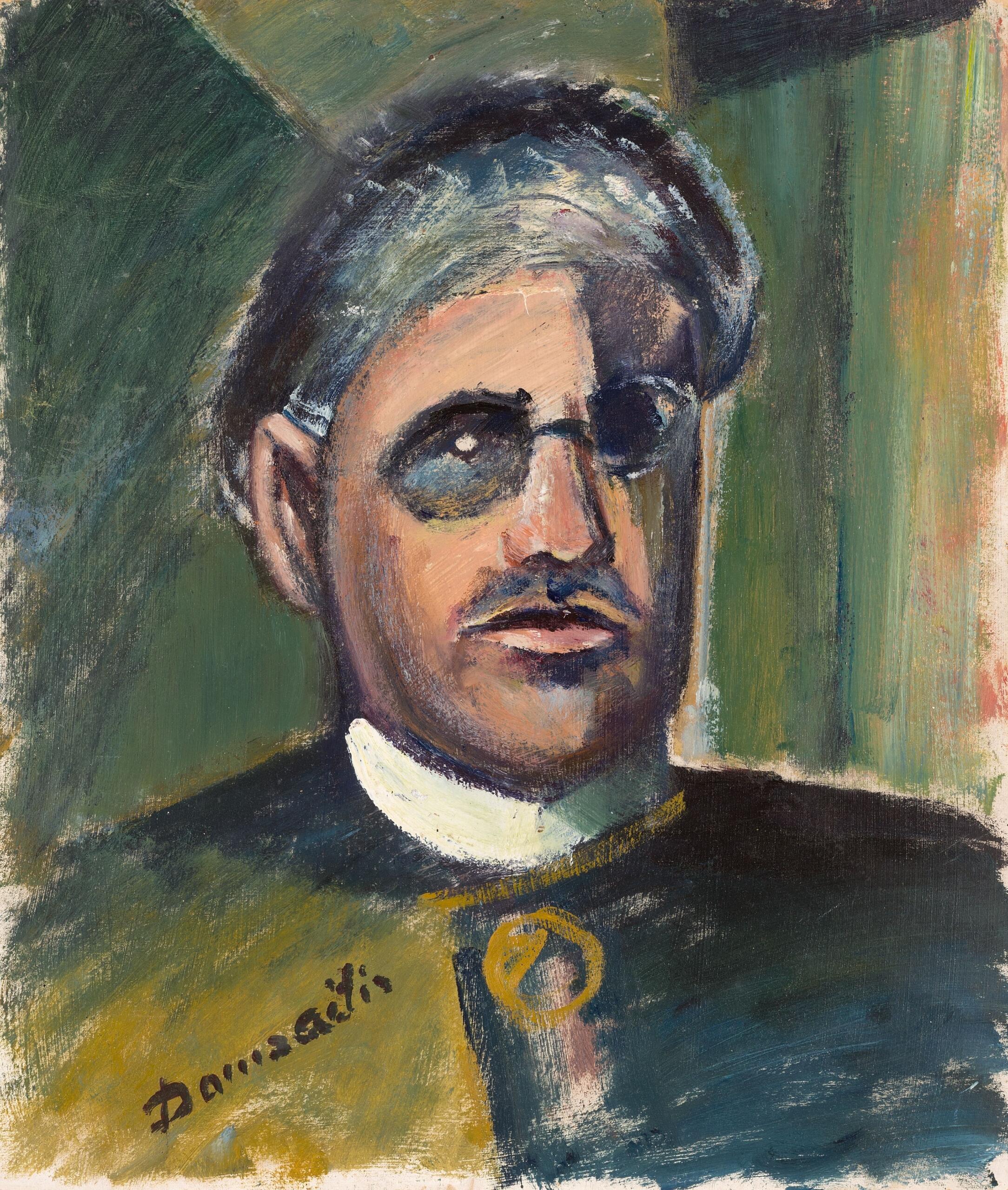

„I’m always on the go…” –
The painter Franz Domscheit / Pranas Domšaitis (1880-1965)
Lecture by Jan Rüttinger, Lüneburg (Germany)
February 28, 2024 @ 12:00 pm - 1:00 pm
| FreeSearching, wandering, not arriving – this is how the person and art of Franz Domscheit/Pranas Domšaitis can be characterized. Born into a German-Lithuanian family as the son of a farmer and innkeeper, it was primarily his Lithuanian origins that interested him. The early landscape and cultural impressions of his homeland, Prussian-Lithuania, at the interface of German and Lithuanian culture, shaped his work throughout his life. Landscape is one of the painter’s main themes, who is primarily perceived as an expressionist.
Image above: Franz Domscheit, Two Peasant Women, 1930s. Oil on canvas. Copyright National Lithuanian Art Museum.
Trained at the Königsberg Art Academy by Ludwig Dettmann, among others, Domscheit then moved out into the world. Berlin, Paris, London, Oslo and St. Petersburg are among his destinations. He always wanted to continue his education and met artists like Lovis Corinth and Edvard Munch who influenced him. The numerous travels, including beyond the borders of Europe, were reflected in many of his works of art.

Franz Domscheit, Potato Peeler, 1926. Oil on cardboard. Copyright National Lithuanian Art Museum

Franz Domscheit, Self Portrait, 1920s-1950s. Oil on cardboard. Copyright National Lithuanian Art Museum
After Domscheit was branded a representative of “degenerate art” during the Nazi era, he retreated to the Alps and into internal exile. In 1949 he finally emigrated to South Africa. Recognized as a Lithuanian citizen, he now called himself Pranas Domšaitis (the Lithuanian form of his name). The new surroundings inspired him to create new types of images and compositions, but his image motifs and themes, which were influenced by Lithuanian culture, remained recognizable.

Franz Domscheit, Annunciation, 1954-58. Oil on cardboard. Copyright National Lithuanian Art Museum

Franz Domscheit, Portrait African Woman, 1953-54. Oil on cardboard. Copyright National Lithuanian Art Museum
Lecture by Jan Rüttinger, who studied in Erlangen, Rome and Bamberg. Degree in medieval art history, medieval history and archeology of the Middle Ages and modern times in Bamberg. Graduate school “Monastery and World” at the University of Paderborn, collaboration on the large medieval exhibition “Canossa 1077. Erschütterung der Welt” (Shaking the World). Museum traineeship at the German Historical Museum, Berlin. Afterwards, he was project coordinator of a German-Polish EU project in Kamenz/Upper Lusatia, and, at the same time, research assistant and responsible for the St. Annen Museum of Sacred Art. He then became collection manager at the Museum of Bread and Art in Ulm and then at the Diocesan Museum in Augsburg. Since the end of 2022, he is the deputy museum director and curator of art at the East Prussian State Museum in Lüneburg, Germany.
This event is part of the virtual series “Flight or Fight. stories of artists under repression,” which is organized by The Fritz Ascher Society for Persecuted, Ostracized and Banned Art, New York. Future events and the recordings of past events can be found HERE.
The Fritz Ascher Society is a not-for-profit 501(c)3 organization. Your donation is fully tax deductible.
YOUR SUPPORT MAKES OUR WORK POSSIBLE. THANK YOU.


